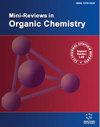噻唑合成综述:磁性可回收催化剂研究
IF 1.9
4区 化学
Q2 CHEMISTRY, ORGANIC
引用次数: 0
摘要
在化学领域,噻唑及其衍生物是一类重要的生物活性分子,被认为是许多其他生物活性化合物的基本组成成分。许多合成药物,包括杀菌剂、染料、抗菌剂和抗惊厥剂,都是以噻唑及其衍生物为中间体制成的。因此,有机合成研究的主要领域之一是提出合成噻唑衍生物的有效且环境可接受的催化方法。在过去的十年中,使用磁性纳米复合材料作为催化剂彻底改变了化学中的有机合成。磁性纳米粒子非常稳定,且表面易于操作,因此可以制造出高效的催化剂。磁性纳米催化剂的主要特点是只需使用外部磁铁,就能很容易地从反应混合物中分离出来。近年来,有报道称几种磁性纳米催化剂可用于生产各种噻唑化合物。我们将在这篇文章中介绍这些方法,并谈谈这些催化系统的特点。这篇综述将对那些对磁性纳米催化剂感兴趣并从事噻唑合成领域工作的合成化学家有所帮助。本文章由计算机程序翻译,如有差异,请以英文原文为准。
A Comprehensive Review on Synthesis of Thiazoles: Research on Magnetically Recoverable Catalysts
In chemistry, thiazoles and their derivatives constitute a significant class of biologically active molecules that are thought to be the fundamental building blocks of numerous other biologically active compounds. Many synthetic pharmaceuticals, including fungicides, dyes, antimicrobials, and anticonvulsants, are made using thiazoles and their derivatives as an intermediary. Thus, one of the main areas of organic synthesis research is the presentation of effective and environmentally acceptable catalytic methods for the synthesis of thiazole derivatives. Over the past ten years, organic synthesis in chemistry has been completely transformed by the use of magnetic nanocomposites as catalysts. Magnetic nanoparticles are very stable and easily manipulated on the surface, which can result in the creation of an efficient catalyst. The main feature of magnetic nanocatalysts is their ability to be easily separated from the reaction mixture using only an external magnet. In recent years, several magnetic nanocatalysts have been reported to produce various thiazole compounds. We will look at these methods and talk about the characteristics of these catalytic systems in this post. This review will be helpful for synthetic chemists who are interested in magnetic nanocatalysts and working in the field of thiazole synthesis.
求助全文
通过发布文献求助,成功后即可免费获取论文全文。
去求助
来源期刊
CiteScore
4.50
自引率
4.30%
发文量
116
审稿时长
>12 weeks
期刊介绍:
Mini-Reviews in Organic Chemistry is a peer reviewed journal which publishes original reviews on all areas of organic chemistry including organic synthesis, bioorganic and medicinal chemistry, natural product chemistry, molecular recognition, and physical organic chemistry. The emphasis will be on publishing quality papers very rapidly, without any charges.
The journal encourages submission of reviews on emerging fields of organic chemistry including:
Bioorganic Chemistry
Carbohydrate Chemistry
Chemical Biology
Chemical Process Research
Computational Organic Chemistry
Development of Synthetic Methodologies
Functional Organic Materials
Heterocyclic Chemistry
Macromolecular Chemistry
Natural Products Isolation And Synthesis
New Synthetic Methodology
Organic Reactions
Organocatalysis
Organometallic Chemistry
Theoretical Organic Chemistry
Polymer Chemistry
Stereochemistry
Structural Investigations
Supramolecular Chemistry

 求助内容:
求助内容: 应助结果提醒方式:
应助结果提醒方式:


